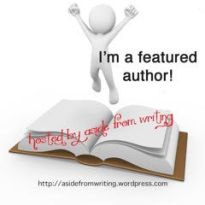So, Victoria Zigler asked two questions:
- Is that bit in your bio about the fear of alligators true?
I’m twitchy around alligators, sharks, and crocodiles. Something about aquatic predators in general make me nervous, which might stem from stumbling onto movies like Jaws, Orca, and Alligator when I was a kid. Seriously, a human without technology is helpless in the water. Anyway, on to the next one.
- You often mention that many of your characters came from characters from your gaming days. Did you start writing the stories because you stopped gaming? Or was it something you thought of doing even when you were still gaming?
This is a topic that I’ve touched on HERE in terms of the transition from game to books. I began playing D&D when I was 13 and the writing desire hit at 15. One of my earliest series ideas stemmed from the original characters my friends and I used. They were lacking in personality beyond our teenage craziness, so I changed what I could to make them stronger characters. It was when I hit college that I really began using games to test out characters and story lines. The two pretty much went hand-in-hand for a while and I would only use characters that I had permission. For example, there was a half-demon thief in the game version of Legends of Windemere, but the player wanted to use it for herself. So, I didn’t use the subplots that involved her and filled in the main plot holes with other characters.
Now, the timing of gaming and writing for me is fairly simple, but one thing this brings to mind is how not everything can transfer from game to book. You run into issues with the book for various reasons:
- Games involve dice rolling instead of planned events. There’s luck involved in a game as well as math. You can’t just say Luke Callindor ran through the bad guys to take a lot of damage, made the leap onto the balcony, survived the point blank blast, and defeated the Lich in one blow. You need to roll for that and it involves a lot of luck because the failure of any one of those parts means Luke is done.
- Games have more than one person involved, which prevents certain scenes from happening. You can’t have a lot of one-on-one scenes or the other players will get angry. So, much of what happens in a game is done as a group. Nearly all of the solo scenes in Legends of Windemere were made by me instead of happening in the game.
- Back when I was doing a lot of gaming, women weren’t very common in the groups. In high school, it was all guys and the first female D&D’er I met was the newbie who played Nyx. This means, a book based off a game can become very male-centric since that’s the gender of most, if not all, of the characters. You have to design the female characters from scratch when you do the book, but I was lucky to usually be gaming with women in college. This isn’t to say you don’t have female characters because they do show up as NPC’s, but that means they were made and used by the game-runner. For example, while Nyx, Sari, and Dariana were used by players, Selenia Hamilton, Theresa Marley, and Luciana Silverstar were by the GM. On the other hand, Queen Trinity and Kira Grasdon were made completely by me for the book.
- Connecting to the previous point, games don’t typically have romances beyond picking up tavern girls with seduction rolls or flirting. Things get a little easier with female players, but we’ll go over the ones that lack this important demographic. You need to make up your own significant others for your book unless you try to talk the GM into doing something in the game. This can backfire horribly since you have two guys trying to flirt without laughing and while being teased by the others. A good example of this would be Sari. The player left the game a semester after joining, but she was there long enough to start the Luke/Sari romance. We kept her around as a prisoner of Stephen, in a coma, and then an NPC. The few times the GM and I tried to do the ‘romance’ side, it just got awkward. So, an author that does an adaptation really needs to figure that certain plots will need to appear from scratch.
- Since game characters exist off stats and leveling, you need to figure out how progression can be shown in a book. There’s no leveling up in a book, so you need to have them improve through action and even have them start with more skills than a 1st level character would have. You need this to work for the story and timeline. So, a series that takes place over a year can’t put a lot of time aside for training, which means the characters might need to start off stronger. It’s easier to see how the character survives if they’re more skilled too. For example, Game-Nyx began with a single attack spell and the rest was more back-up. This meant she was not a lot of use in big battles because she ran out of magic quickly and would repeatedly get knocked out in hand-to-hand fights. Honestly, she should have been killed so often that it was ridiculous and it’s a reason Book-Nyx came out the way she did. The determination, temper, and aggression was key to her personality, but it would have led to her dying before the end of her debut book. That’s why I made her incredibly powerful and change her storyline from ‘gaining strength’ to ‘handling strength without hurting those around her’. You can’t really do the second one in a game until your character gets to very high levels and that can take years upon years.
- Sometimes you only get to keep the characters or the story while the rest has to be left behind. Remember that games happen in their own world, so things that are specific to that can’t be carried over with ease. This is why you can’t really take an entire game over into a book. It can happen to different extremes too. You might leave a little in the garbage can because it doesn’t translate or you can do an extreme shift. War of Nytefall is an example of the latter. Clyde and his gang began in a game called ‘Vampire: The Masquerade’, which is earth-based. He never had his own real quest or story beyond surviving too, so there wasn’t a story to carry over. When I moved the Dawn Fangs to Windemere, the guns, chainsaws, grenades, motorcyles, and other pieces of tech were lost. I had to change many of the characters to fit into a world of magic, especially since I no longer had to stick to humans. So, you do need to have a lot of flexibility.
So, this became more tips than about me specifically. Hope everyone enjoyed. Maybe I’ll make a Sunday post the touches on how each main character of my two series changed during their transitions.






Thanks for answering my questions.
Those are great points/tips regarding the gaming/writing question. I’m a gamer myself, so know how true those points are. I’ve never put any of the characters I’ve used for gaming in to books though. Not yet anyhow. My “Zeena Dragon Fae” series has characters based on Pathfinder characters, and so do a couple of my other books, but the characters were spacifically created for the stories. Hubby enjoys making characters for the games, and I thought it would be a fun way to create character profiles. Anyway, I for one would be interested in hearing about how your characters changed during the transition from game to book.
LikeLike
I’ll work on the change post for Sunday. Do you take anything from Pathfinder to put in your books?
LikeLike
In the books where I’ve used Pathfinder characters, I use the abilities in a similar way to how they would work for characters in the game, though using creative lisence when actually describing them working, as well as at times when things just can’t work the way they do in a game for a book.
LikeLike
Creative license is always a necessity. 😁. I do the same with D&D.
LikeLike
It is indeed. 🙂 They’re similar systems… D&D is one of the systems I’ve played.
LikeLike
It’s been decades since I played D & D. Inspiration can come from anywhere or anything. Modifications have to be made for any written format. There is some Diablo inspiration behind part of the pirate story I’m working on now. In one of my trunk novels, there was a witch who had spell books from before the collapse that were written by a wizard named Gygax. Does that count?
LikeLike
The game has really changed even from when I was played it 15 years ago. Think they’re up to 5th Edition. The wizard named Gygax is definitely an homage and inspiration. Legends of Windemere is more of an adaptation though. The story and characters are mostly the same. Eh, I say we should let it count.
LikeLiked by 1 person
Holy Moly, Charles. Talk about a lot of history. Thanks.
LikeLike
Yup. It’s been a long road. 🙂
LikeLiked by 1 person
😀
LikeLike
…Please tell me you have D20 at home that you roll to divine the fate of your characters! Ha ha!
LikeLike
I have a box of dice, but I don’t roll them for book-related stuff. I tried it once and ended up killing off the entire cast of a book. So many natural ones.
LikeLiked by 1 person
Ha ha! Okay, good reason not to roll the dice!
LikeLike
It’s also been decades for me since I played D&D. And I got into playing because I guy I dated was into it.
It’s interesting to see how your gaming days led to your book series, but how changes had to be made because of the lack of dice rolling.
LikeLike
Writing and gaming were two separate hobbies until senior year of high school. That was when I took our hack-and-slash characters and attempted to give them a story. I made them a lot smarter than they really were, which might have been why I didn’t get very far.
LikeLiked by 1 person
Wow. It’s cool that you’ve been working on these characters for so long.
LikeLike
Pingback: Legends of Windemere: Book Champions vs Game Champions | Legends of Windemere
…Please tell me you have D20 at home that you roll to divine the fate of your characters! Ha ha!
LikeLike
I do have a collection of dice, but I don’t use them for that. Too big a risk of the story falling apart.
LikeLike